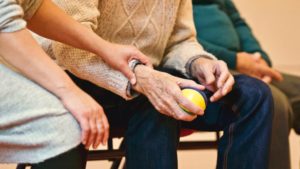
Interesting Fact – On average, a human heart beats about 2.5 billion times in a person’s lifetime.
Organ Profiles and Transplant Statistics
Heart
This organ is a muscular pump that circulates blood carrying oxygen and nutrients to, and wastes from, the body’s cells. The right side of the heart circulates blood to the lungs. The left side circulates blood to the rest of the body and back to the heart.
Diseases and Disorders
* Cardiomyopathy is an abnormality of the heart muscle. The cause is often unknown. Advanced cases may require a heart transplant.
* Congestive Heart Failure is a condition resulting from heart disease such as coronary artery disease. The heart no longer pumps enough blood to meet the body’s needs. A heart transplant may be needed if medical treatments fail.
* Myocarditis is an inflammation of the muscle tissue of the heart, often a complication of various infectious diseases. Severe cases can result in heart failure and require a heart transplant.
* Congenital Heart Disease is the most common lethal birth defect, and the most common indication for heart transplantation in infants and young children
.Transplant Statistics
* Each year, about 2,000 heart transplants and fewer than 50 heart-lung transplants are performed.
* In 2003, around 3,500 people were on the waiting list for a heart transplant and about 200 were waiting for a heart-lung transplant.
* In 2003, over 450 people died while waiting for a heart transplant.
* About 85 percent of heart transplant recipients are surviving one year after transplantation.
Interesting Fact
On average, a human heart beats about 2.5 billion times in a person’s lifetime.
Lung
This pair of organs provides an environment for gas exchange: Oxygen passes into the bloodstream through microscopic air sacs in the lungs, while waste carbon dioxide passes out of the bloodstream into the lungs. Breathing facilitates this exchange of gases.
Diseases and Disorders
A number of diseases and disorders lead to lung transplants each year: cystic fibrosis, pulmonary hypertension, pulmonary fibrosis, emphysema, and pulmonary edema, among others. People with these conditions usually must lead a very sedentary lifestyle. Many of these conditions are life-threatening.
Transplant Statistics
* About 1,000 patients receive a lung transplant each year.
* Each year, about 4,000 people are waiting for a lung transplant.
* Over 400 people die each year while waiting for a lung transplant.
* About 75 percent of lung transplant recipients survive the first year.
* A single lung can save a life. One deceased donor can be the source of two lung transplants.
Interesting Facts
Normal breathing rate at rest for an adult ranges from 15-25 breaths per minute. During
a 24-hour period, the average number of breaths taken by
a human is around 23,040.
Intestine
The intestine is the part of the alimentary canal that extends from the stomach to the anus. The first part-a long, narrow, and convoluted section is referred to as the small intestine. Its function is to complete the digestion and absorption of digested nutrients into the bloodstream and lymph. The second part-the large intestine-is not usually transplanted.
Diseases and Disorders
Intestine transplants are required when the intestine becomes twisted and blocked or when there is irreversible intestinal failure. Most cases of intestinal failure are caused by short-gut syndrome (a significant loss of length of the small intestine present at birth or as a result of surgical removal or trauma). People with intestinal failure must receive nutrients intravenously. Because long-term intravenous feeding usually causes liver damage, many people who require a small intestine transplant also require a liver transplant at the same time.
Transplant Statistics
* Around 100 intestine transplants were performed in 2003.
* In 2003, over 150 patients were on the waiting list for an intestine transplant.
* In 2003, about 40 people died while waiting for an intestine transplant.
* The one-year survival rate for intestine transplant recipients is about 60 percent.
* The majority of intestinal transplants are performed in infants and children.
Interesting Facts
While smaller in diameter than the large intestine, the small intestine is much longer-about 7 meters to the large intestine’s 1.5 meters.
Liver
This large organ destroys toxic substances in the body and breaks down unwanted protein into the waste product urea. The liver stores some food substances until the body needs them. It also produces a green liquid-bile-that is released into the intestine to help break down large fat droplets into smaller fat droplets to prepare fat for chemical digestion.
Diseases and Disorders
* Birth defects of the liver or bile duct.
* Chronic liver infections, such as hepatitis (particularly B and C), which severely damage the liver.
* Damage from alcohol and other drugs.
* Damage from blood clots in the liver.
* The skin of people with liver damage may turn yellow from a condition called jaundice. They also may gain weight and experience general weakness. Because the liver is involved in many metabolic processes, severe liver damage is often fatal.
Transplant Statistics
* Around 5,000 people receive liver transplants each year.
* Each year, over 17,000 people are waiting to receive a liver transplant.
* Each year, about 2,000 people die while waiting for a liver.
* One year after the surgery, about 85 percent of liver transplant recipients live fairly normal lives.
* A donated liver can be split between two recipients, so that one deceased donor can be the source of two liver transplants.
Interesting Fact
More heat is produced by the liver than by any other organ in the body.
Kidney
One of a pair of organs that control the amount of water in the body and filter urea and other wastes into urine. The kidneys also produce a hormone (erythropoietin) that controls the production of red blood cells.
Diseases and Disorders
* High blood pressure causes kidney damage, can lead to kidney failure, and is-as a result-an important predictor of kidney failure.
* Diabetes (see pancreas) is a leading cause of kidney failure.
* Other diseases (cystic kidney diseases) can cause the kidneys to become inflamed or can produce cysts in the kidneys that prevent them from functioning properly.
* People with severe kidney disease are often placed on dialysis machines
Transplant Statistics
* About 14,000 kidney transplants are performed each year. Just over one third of transplanted kidneys are from living donors.
* At any point, about 55,000 people are on the waiting list for a kidney transplant.
* Every year, over 3,000 people die while waiting for a kidney transplant.
* The one-year survival rate for kidney transplant recipients is about 95 percent.
Interesting Fact
After kidney transplants, most recipients have three kidneys because their own kidneys are usually left in place.
Pancreas
The pancreas produces two enzymes-insulin and glucagon-that control the level of sugar in the blood. In addition, the pancreas produces a mixture of enzymes, called pancreatic juice, which is released into the small intestine to help digest starch, proteins, and fats.
Diseases and Disorders
* Malfunction or failure of the pancreas leads to diabetes-an inability to control the level of glucose in the blood.
* Individuals with this condition are called diabetics and may need insulin to control the level of glucose in the blood. Diabetes can damage or cause the failure of many of the body’s organs. Because patients requiring a pancreas transplant often have kidney disease, the pancreas and kidneys are sometimes transplanted together. Failure to treat diabetes can lead to organ failure and death.
Transplant Statistics
* In 2003, over 450 people received a pancreas transplant.
* In 2003, about 1,500 people were on the waiting list for a pancreas.
* In 2003, about 30 people died while waiting for a pancreas transplant.
* One year after receiving a pancreas transplant, about 95 percent of recipients are still living.
Interesting Fact
The pancreas has a tremendous reserve capacity for the production of some enzymes. More than 95 percent of the function of the pancreas must be lost before the pancreas fails and symptoms of bloating and poor digestion occur.
Source: www.OrganDonor.gov
Provided by: The Staff at www.RetirementConnection.com
Copyright © 2008 RetirementConnection.com. All rights reserved.
Search Residential Care Facilities for Grants Pass
Search Residential Care Facilities for Klamath Falls
Search Residential Care Facilities for Medford
Search Residential Care Facilities for Roseburg










